Server Settings
Mail server settings
Follow the below steps to send alert email notifications.
- Go to Settings → Product settings → Mail Server.
- Specify the Mail Server and Mail Port in the respective boxes provided.
- Select SSL or TLS to enable a secure connection.
- In the From Address field enter the e-mail address from which you would receive the alerts and click on the Send Test Mail link to verify the correctness of the mail server settings and validity of the email addresses.
- In the Admin Mail Address field, enter your email address if you wish to receive notifications for the emails sent from Cloud Security Plus. Notification mails such as license expiration and downtime notifications will be sent to this e-mail address.
- Enable Authentication and enter a Username and Password to avoid anonymous login.
- Click on Save Settings.
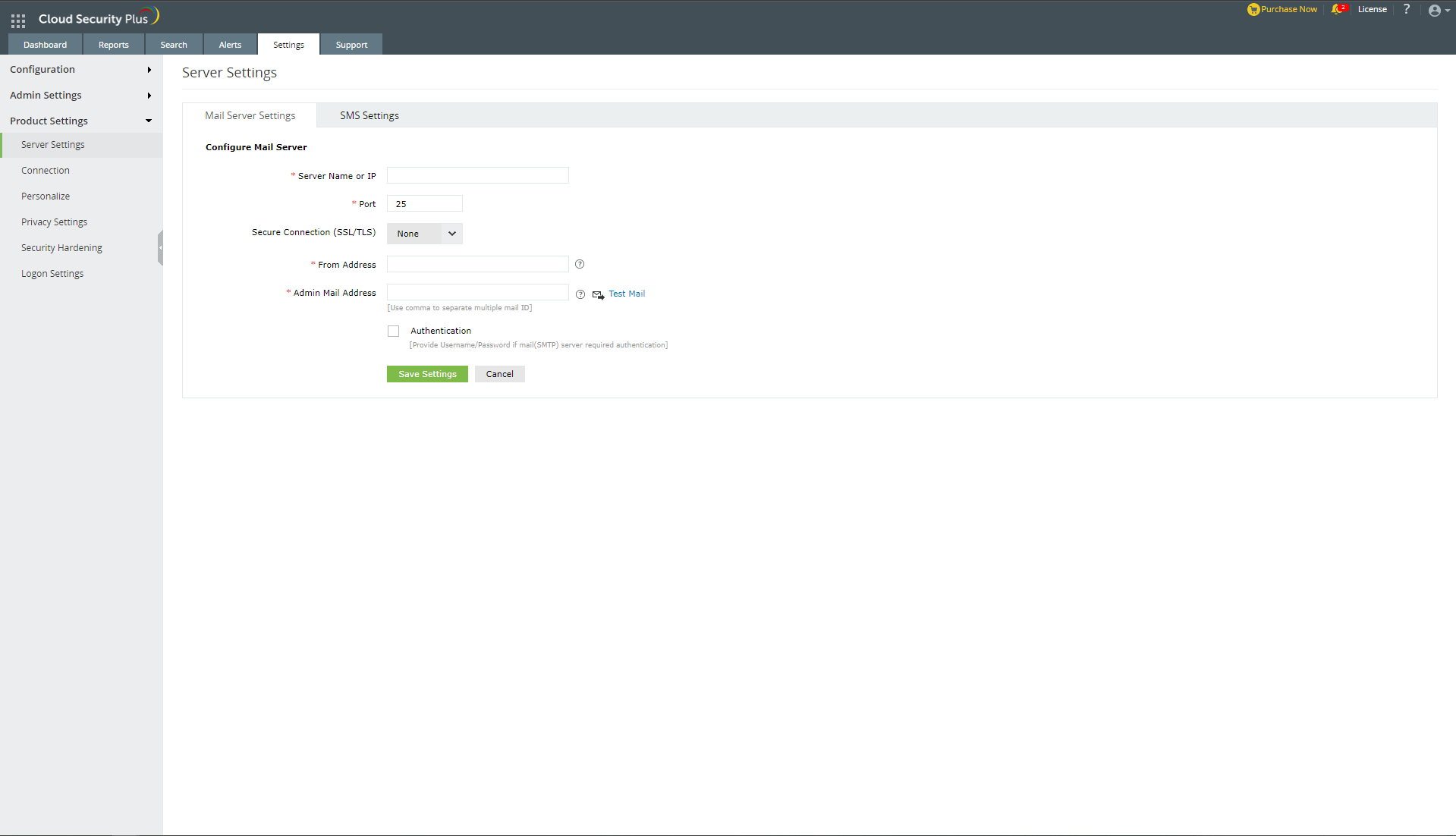
SMS Gateway
You can configure Cloud Security Plus to use your own GSM modem or your custom SMS gateway.
Configuring GSM Modem:
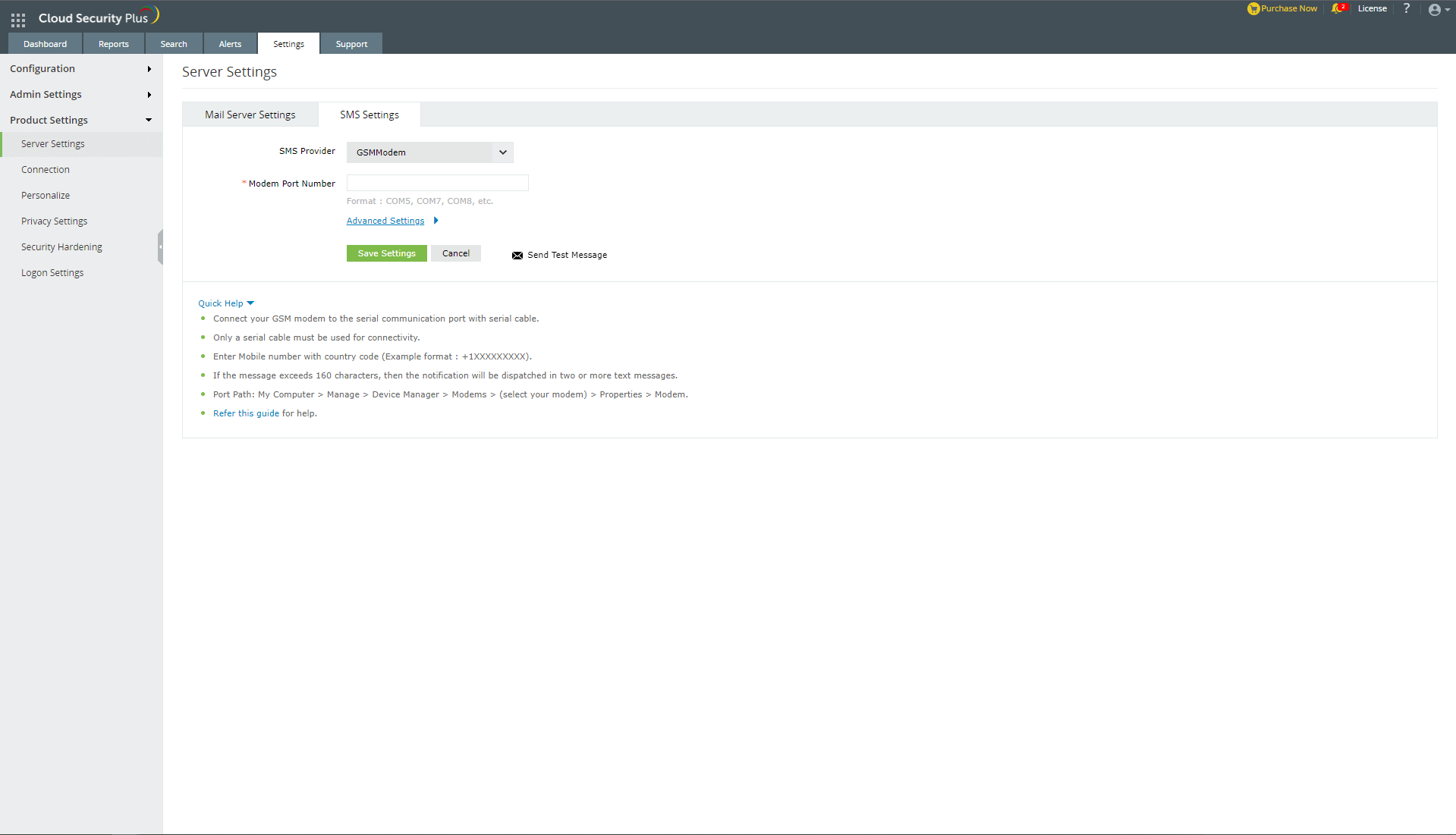
- Navigate to Settings → Product Settings → Server Settings.
- Click SMS Settings tab.
- Select GSMModem from the SMS Provider drop down box.
- Specify the Modem Port Number.
- Click Save Settings.
Steps involved in configuring the modem port & modem speed:
- Connect your GSM Modem to the Serial Communication Port.
- Only a serial cable must be used for connectivity.
- The port number for Window Devices will be comX. Eg. com7 or com8.
- Enter the Port Number to which the modem is connected.eg.(COM 1).
Requirements for Establishing SMS Server Connection:
- Modem/mobile must have GSM functionality with a provision to insert the SIM card.
- Should support 7-bit (GSM default alphabet), 8-bit and Unicode (UCS2) encoding.
- Make sure the GSM Modem configured with Cloud Security Plus is not used by any other application.
- If you experience any issue in sending SMS notifications through GSM Modem, please restart Cloud Security Plus and try again.
- Matching these criteria allows Cloud Security Plus to support your modem/ mobile phone.
Configuring Custom SMS Provider:
You can configure you own custom SMS gateway provided that the gateway is HTTP or SMTP-based. Please follow the steps given below:
HTTP-based SMS provider:
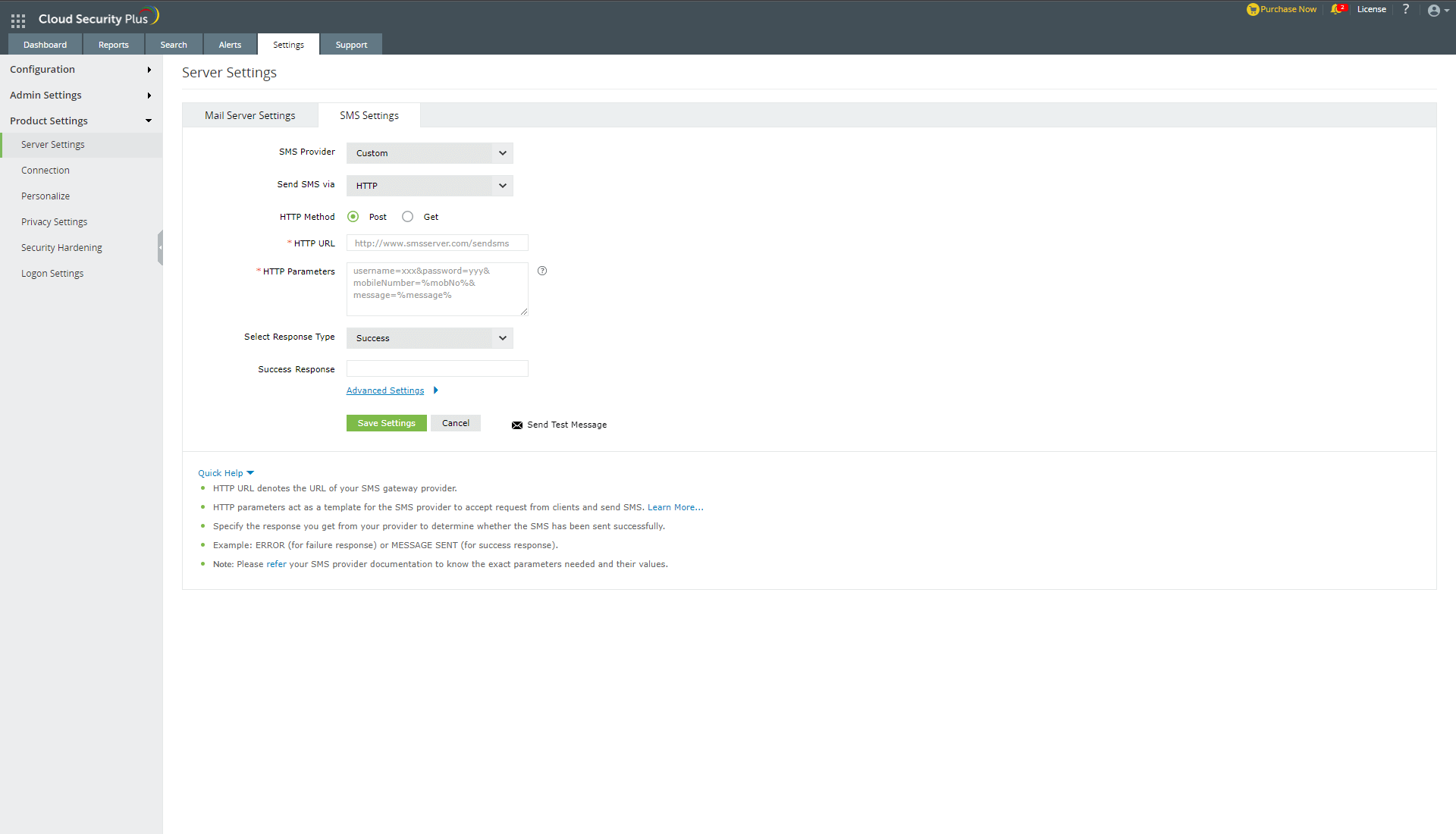
- Navigate to Settings → Product Settings → Server Settings.
- Click SMS Settings tab.
- Select Custom from the SMS Provider drop down box.
- Select HTTP from the Send SMS via drop down box.
- Select whether you want to use the Post or Get HTTP method for sending SMS.
- Enter the HTTTP URL of your SMS gateway provider.
- Enter the HTTP Parameters specific to your SMS provider.
Note:
- Separate the HTTP parameters by an ampersand (&) sign.
- Example format: userName=xxx&password=yyy&mobileNumber=%mobNo&message=%message%.
- You can use the following parameters:
- userName = the parameter which is used to denote the API authentication username.
- xxx = API authentication username.
- password = the parameter which is used to denote the API authentication password.
- yyy = API authentication password.
- mobileNumber = recipient parameter.
- %mobNo% = this macro denotes the user's mobile number.
- message = message parameter.
- %message% = this macro denotes the SMS message content.
- More HTTP Parameters = If you SMS provider requires more parameters like Unicode and APIID, include them as well using the '&' sign.
- Specify the response you get from your provider to determine whether the SMS has been sent successfully.
- Click Advanced Settings. Enter the HTTP Request Headers specific to your SMS provider.
- Select the option Convert Message into Unicode to send SMS in Unicode format.
- Click Save.
SMTP-based SMS provider:
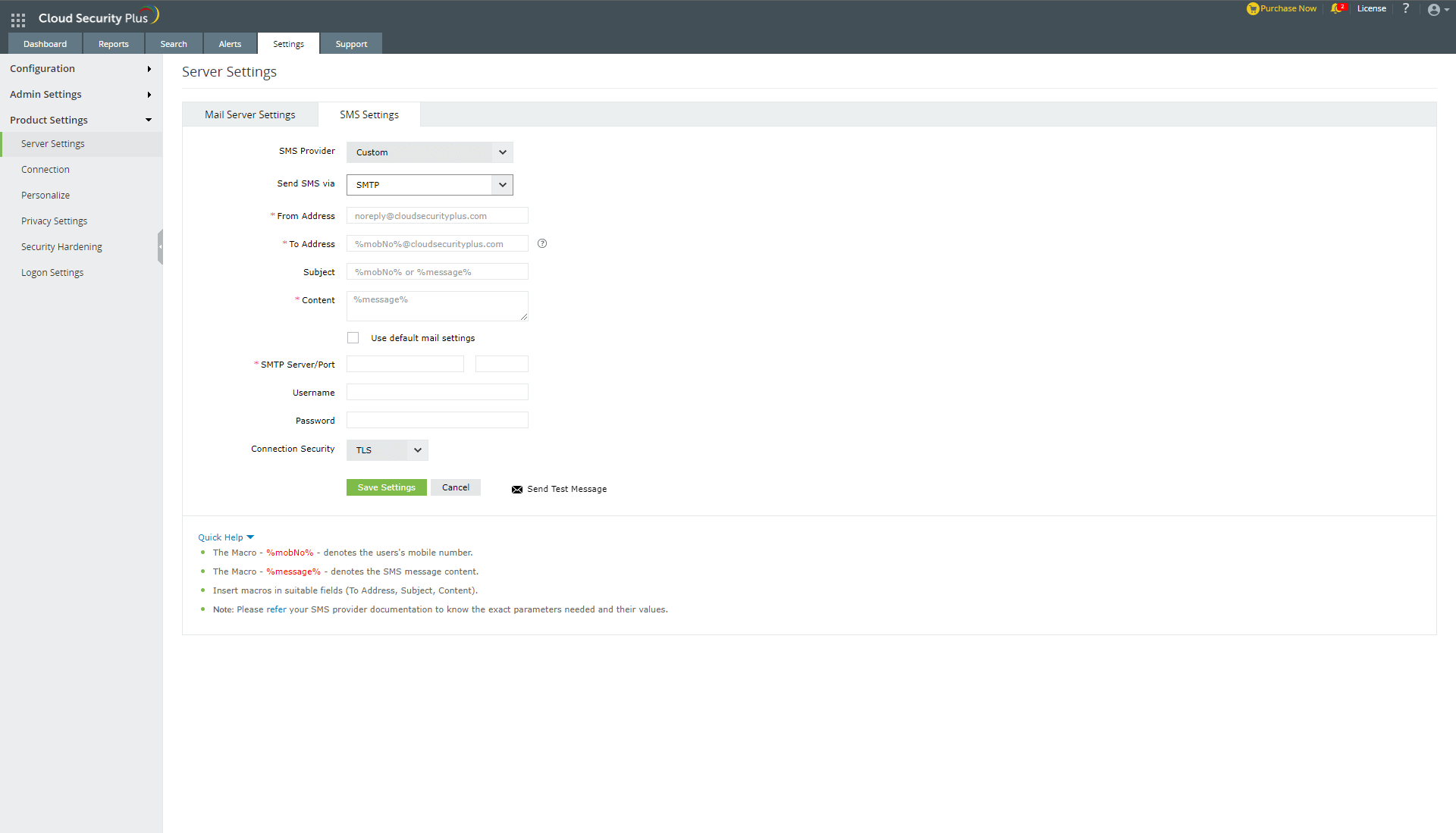
- Navigate to Settings → Product Settings → Server Settings.
- Click SMS Settings tab.
- Select SMTP from the Send SMS via drop down box.
- In the From Address field enter an email address from which you want to send the SMS. Eg: noreply@manageengine.com
- In the To Address field enter the %mobNo% macro followed by the email of your provider. For example: %mobNo%@manageengine.com. Refer your SMS provider to know the exact values.
- Enter the details required in the Subject field. Generally, it would be either a mobile number or message depending upon your SMS provider.
- Enter the details required in the Content field. This also depends on your SMS provider. Please refer them to know the exact values.
- Click SMTP Server Settings.
- Enter the name or IP address of the SMTP server and its Port numbers.
- Enter the username and password of the SMTP server.
- Click Save.
Note: If you don't configure the SMTP server settings, then the mail server configured under the Product Settings → Server Settings → Mail Server Settings tab will be used.
SMPP-based SMS provider:
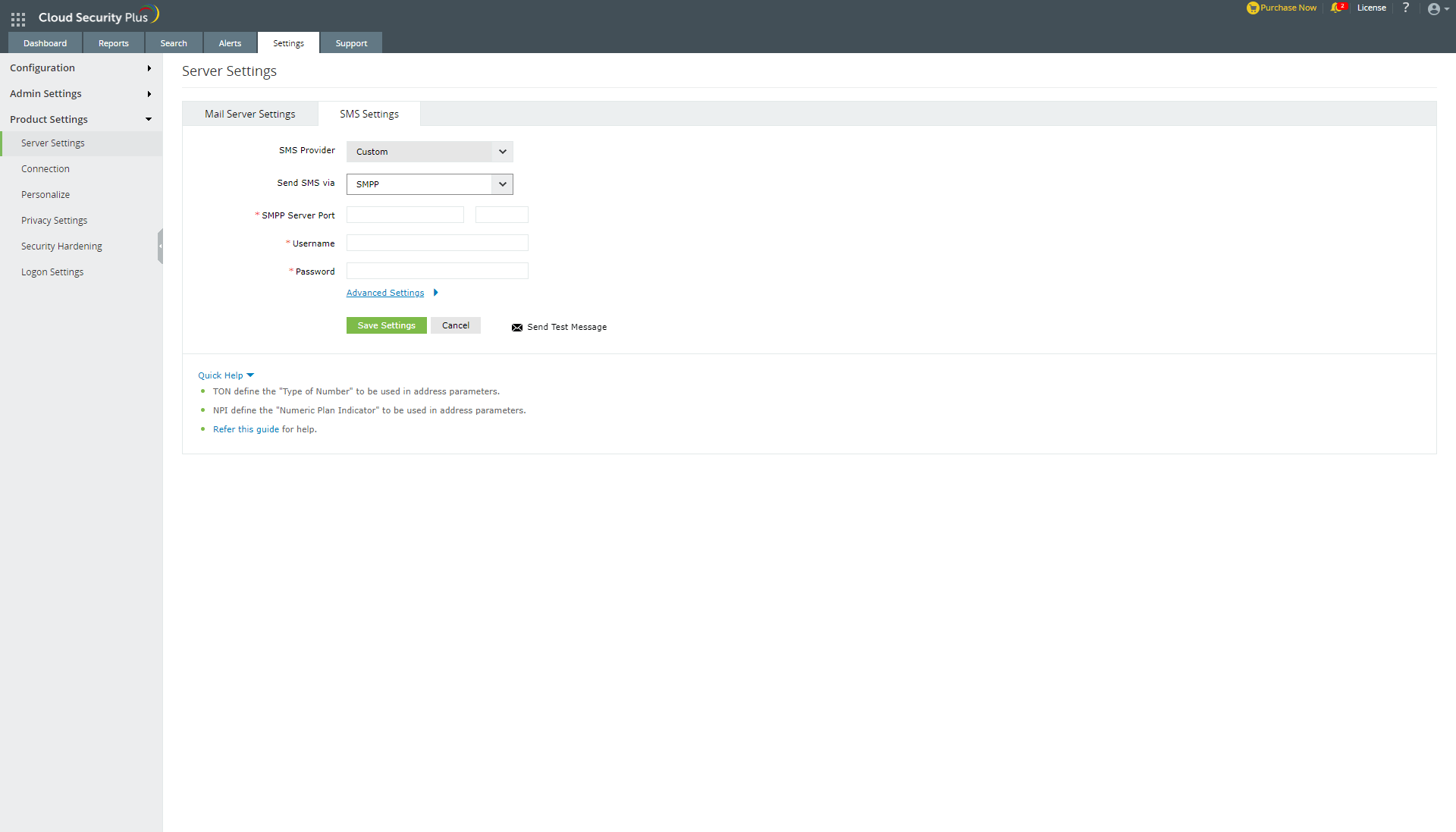
- Navigate to Settings → Product Settings → Server Settings.
- Click SMS Settings tab.
- Select Custom from the SMS Provider drop-down box.
- Select SMPP from the Send SMS via drop-down box.
- Enter the SMPP Server Name and its SMPP Server Port.
- Enter the Username and Password of the SMPP server.
- Click Advanced Settings.
- Enter the SMPP Source Address.
- Select the Source Address’s TON (type of number).
- Select the Source Address’s NPI (Numeric Plan Indicator).
- Select the Destination Address’s TON.
- Select the Destination Address’s NPI.
- Click Save Settings.




